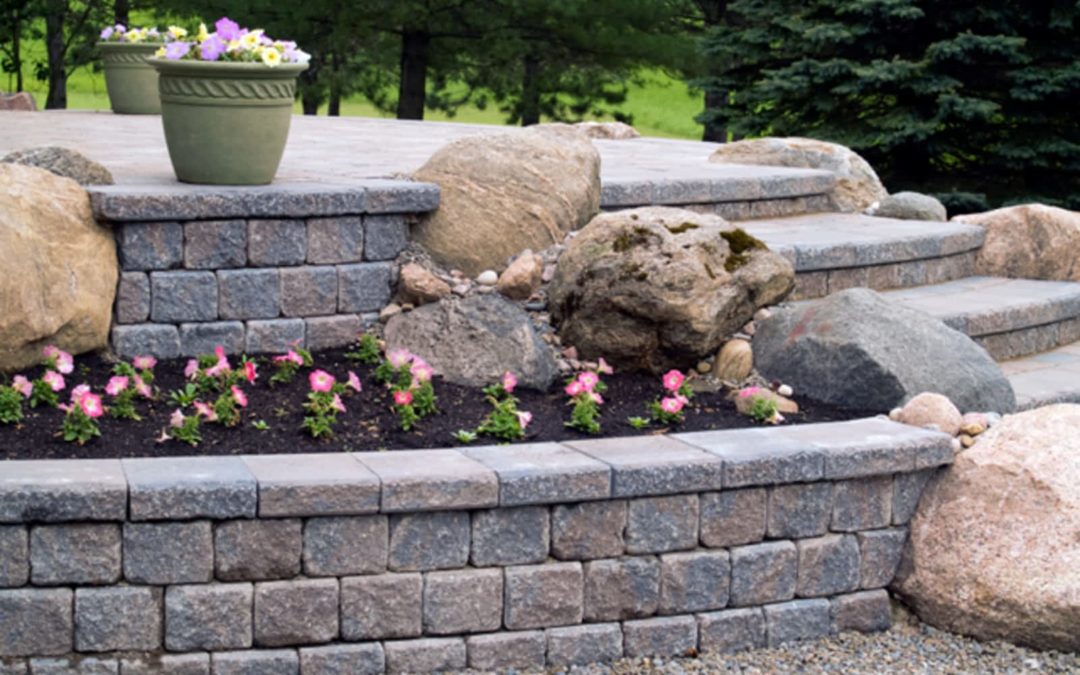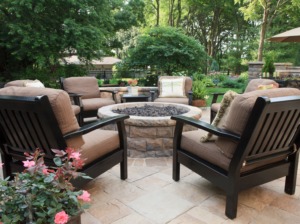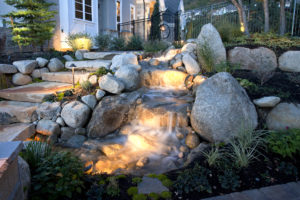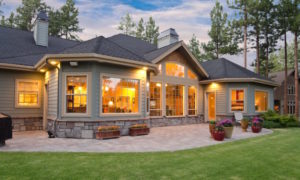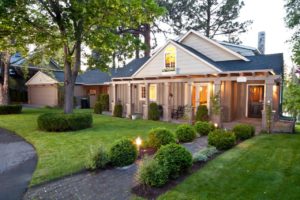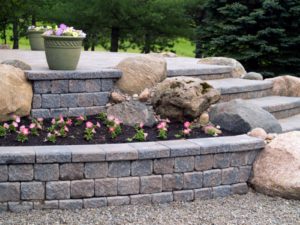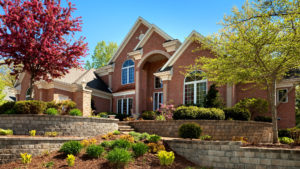When a home or business owner wants to upgrade their property or add to the curb appeal for increasing appraisal or resale value, there are many things to consider. Custom Retaining Walls are definitely on the list of landscaping construction that will create the most dramatic and impressive change. The proper use of retaining walls are an important part of hardscaping a yard or garden. You may want to create spaces and divisions by using retaining walls, or perhaps there is an area that you would like to stop erosion from destroying part of your design. Sometimes the lay of the land can be your enemy when developing raw land and you may need to install a series of short walls to keep a mountainside safe for whatever purpose you intend to use it for.
Types of Custom Retaining Walls
There are several kinds of walls that you might build on a property in order to achieve you landscaping design. There are some unconventional methods out there but mostly these are the Types of Custom Retaining Walls to consider when planning the hardscape phase of your project.
Gravity Walls are the simplest type of retaining wall. Simply put this Custom Retaining Wall uses weight to stay in place and hold whatever needs retaining. This kind of wall can use many types of material to become the a hardscape barrier. Consider using decorative bricks or stones, remember if you go wide enough with he base of this kind of wall you might not need to secure the bricks or stones and is a good candidate to create a rough, natural appearance. You might want to remove the loose soil below this wall and even pour a concrete base.
Crib Walls are a specific type of gravity retaining wall. These walls are made from concrete or wood and look like a giant waffle that can be filled with dirt to increase weight. The grid-like design give it the ability to fill with dirt and become very heavy as well as provide the intrinsic spaces that can be used for spoftscaping, flowers, bushes and shrubs could be implemented into the wall.
Gabion Walls are usually made from binding stones together with wire or thin cages. These walls can be useful in fighting erosion or to make a steep incline more stable. These Custom Retaining Walls should be dealt with by a professional due to the requirements needed in order to complete the job safely.
Cantilevered Walls are constructed with the use of something that provides extra reinforcement to give added strength, this can be done by adding a large supported foot. Covering this footer with stones or turf can assure security that this wall is definitely not going to move. A brace can be added to create another level of support. Anything decorative that can be used to prop the wall from having to stand on its own. There are many ways to get creative when design something that gives a rigid strength to the Custom Retaining Wall. Professional landscapers today have come up with some really cool things.
Sheet Piling Walls are a good choice for your hardscape design when you don’t have an excessive amount of space to work with. These retaining walls can be custom made from simple materials such as sheetmetal or wood planks. Some landscapers have used thin sheets of PVC or glass and devised minimal ways to get them secured to the ground without building obtrusive supports. Most of the time you will find that corrugated materials stand well on their own for creating retaining walls like this. Consider it a rule that you want to be sure to have at least a third of the wall buried into the ground.
Anchor Walls need to have impact drills and power tools to be sure they are installed correctly. Giant concrete screws could be driven into the base of the wall. Other methods can be used to fasten a wall down and keep it from shifting or falling over. Also this is a method of doubling strength for any of the above walls.
Consult Professional Advice when Designing your Retaining Walls
Hardscaping doesn’t have nearly as much DIY potential as softscaping. As you can see the requirements for building a retains wall can be very demanding.Consider consulting a landscape construction professional before you start building a retaining wall. In the long run you will be glad to have the security and most likely, a professional will be able to show you ways to save money and can advise materials that you might not have considered.

